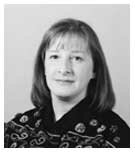 Building a Bridge and Crossing the Divide Building a Bridge and Crossing the Divide
By Rebecca Nassar, Educational Technology Consultant
I've been reading numerous articles about the handheld computer being the answer to the "digital divide" problem. Since handheld computers and their software cost relatively little and the teacher can integrate their use with many classroom projects, the possibility exists for every student to have a personal handheld computer, and there will be "no child left behind."
The digital divide, however, is wider than that. The educational divide is wider than that. Many of us say that throwing money at a problem will not solve the problem. More technology will not solve the problem.
OK, OK. I admit those are nice beginnings, but -- cutting away all the fancy talk and studies -- what else do we need to do? What else do we need to consider?
Finally, I have a better understanding of what a monetary divide is and how to bridge that divide, thanks to Ruby Payne's article, "Understanding and Working with Students and Adults from Poverty" in the October issue of ENC Focus' Success in the Urban Classroom.
Turns out that poverty is more than a lack of money. Two poverty varieties exist: generational and situational. Payne defines situational as poverty that "involves a shorter time and is caused by circumstance, i.e. death, illness, divorce." Generational poverty is "being in poverty for two generations or longer." Poverty, itself, represents doing without financial, emotional, mental, physical and supportive resources; lacking good role models; and failing to understand hidden rules.
People raised in generational poverty usually follow a different set of hidden rules. "Hidden rules are the unspoken clues that individuals use to indicate membership in a group." These rules cover language use, story structure, actions and reactions. Middle class people and upper class people also have different sets of hidden rules. Since business and school worlds use middle class hidden rules, a child of generational poverty does not have the tools to function adequately in school, or, later on, at work.
How do we help these students? First, we need to know their rules and understand them. Then, we need to teach the students the rules that will help them succeed in school and at work. We also need to remember that we cannot pigeonhole students within these groups. Putting a label on something may help to identify it, but it won't fix it.
Please take the time to read this short, to-the-point article online at http://www.enc.org/focus/urban/document.shtm?input=FOC-002943-index . Payne outlines the problems, lists the hidden rules and, most importantly, tells us how to build a way out, a bridge, for students caught in generational poverty.
P.S. A personal handheld computer can still help!
Work Cited
Payne, Ruby. "Understanding and Working with Students and Adults from Poverty." ENC Focus 9.4 (October 2002): 12-17.
|

